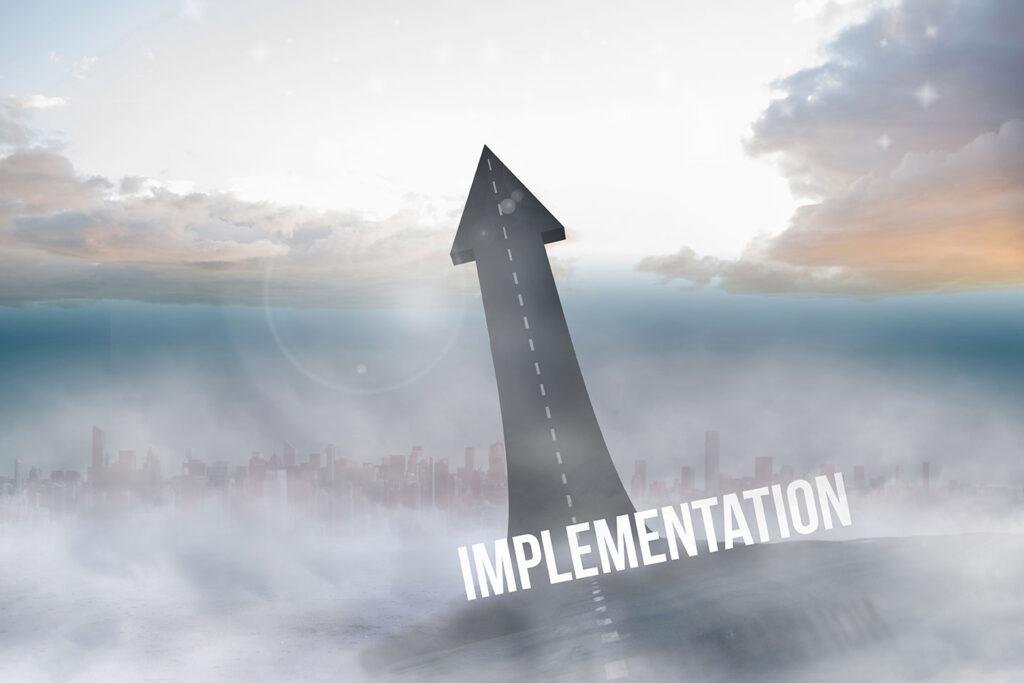The Idea And It’s Components
Imagination is more important than knowledge. For knowledge is limited, whereas imagination embraces the entire world, stimulating progress, giving birth to evolution. – Albert Einstein.
Let’s start by asking you a simple question: do you have an idea you believe can be profitable? If the answer to the question is a yes, what’s stopping you from turning it into reality? I’m sure you have legitimate reasons for not taking action. One of them is that you are unsure what to do with your idea. Another reason may be that you are keeping the idea a secret because you don’t want someone to steal it. Being hesitant is understandable because you must figure out the best next step. Also, your brain picks up the pace with questions like:
- Where do you begin?
- Is the idea a viable one?
- Will the idea work?
- Is there money to be made from the idea?
Turning The idea into profit starts with taking the right steps at the right time.
Components of an idea is also about gaining the knowledge you need to make it happen. Then there is also the possibility that you have many good ideas and are unsure which to choose. How do you know which one is “THE IDEA”? With all the ideas and questions floating in your mind. What happens next is that your brain freezes, you procrastinate, which brings you are back to where you started.
What differentiates you from someone who has turned an idea into a successful business or a tangible reality?
Here is a clue. It is not a coincidence or sheer luck they could maneuver through the tumultuous journey of bringing an idea to life. Here is another hint. You can also turn your vision or idea into reality.
Before starting to showing you how, I want to share an observation. One that I know you are aware of, but don’t acknowledge. It’s simply this:
It’s okay to be afraid

The only thing we have to fear is fear itself. Franklin D. Roosevelt.
Most of us are afraid of turning an idea into reality. Exhilarated by the prospect of the monetary value, we take a few steps towards making it happen. But, we usually back away for other reason that may seem intimidating.
The journey doesn’t begin because of fear of failure and because we are afraid someone can do it better. Simply turn your computer on and do a quick search to see the businesses already thriving. Possibly in the areas of interest you are considering. Here are a few statistics to consider making my point more distinct.
- There are 582 million entrepreneurs in the world
- In America, 90% of the billionaires are self-made
- Not but six years ago, 25 million Americans were starting or running a small business.
I’m sure these facts prove that you’re not alone. It also proves that you have little to fear when starting a business with your idea. There are many people already creating opportunities by turning their big ideas into reality, and you can too.
If you don’t work on your idea soon, someone else will turn it into their reality. Let’s help you create your reality. Here are a few tips to keep in mind. As Fullrliving share the information you need, to make it happen.
Components Of The Idea Starts Here
1. Know your strengths

Knowing yourself is the beginning of all wisdom. – Aristotle
It may not sound sensible, but it’s a vital essential component when working towards fulfilling your dreams.
So, here is an important exercise we recommend. Quickly grab a pen and paper and write your top 5 strengths.
Observe your strengths and ideas. Ask yourself or make a mental note about which ideas align with your strengths. You can also include your friends and family to help with the details. The people close to you are the ones who truly know your strengths. Take your time with this exercise (it doesn’t mean you sit on it for weeks). However, once you’re confident about your strengths, don’t be idle; move on to the next step.
A part of this series will be to highlight what to do and not do when implementing your idea and turning it into a viable, profitable business. Stay tune.
2. Market research

The expert at anything was once a beginner.–Helen Hayes.
Market research can save you a lot of time and effort. However, before going all in, you should know who your competitors are and how viable your idea may be. You don’t need to copy them, but make sure you know what they are doing right and what they are not doing so that you can do it better. This will give you an idea of what you need to focus on and what you should avoid in the future.
Observe the trend in the market
See if what you’re planning is in demand. Research and explore the movements in the market. Do not shy away from talking about your ideas to potential customers, suppliers, and even your competitors. If you feel you don’t have enough contacts and support, look on the internet. It may feel uncomfortable talking to strangers who’ve achieved a lot while you are just getting started. But, remember the words of W. Clement Stone.
Try, try, try, and keep on trying is the rule that must be followed to become an expert in anything.
The potential of the idea
Ask yourself two critical questions about the potential idea.
- Are you solving a problem with your business idea?
- Will the idea change the lives of others?
To honestly know if the idea has any potential, you need to get answers to other qualifying questions. This idea is to gauge the market and the potential of the idea against other similar businesses. Getting to know your competition and potential customers is a critical step.
- What are the details of your current product offerings?
- How is your product/service different?
- How long did your potential competitors take to establish themselves in the industry?
- How loyal are their current customers?
- How much are they charging for their services?
- How can you enhance your potential customer satisfaction and experience with the product or services you want to offer?
- Is this the right time for this business idea?
There are many other questions to consider. Contemplate what questions you need answers for and get ready for the component in this series where we share how to analyze the competitive landscape and delve further into market research.
3. What’s your Unique Selling Proposition (USP)?

What is your Unique Selling Proposition? What makes you different from your competitors? Wrap your advertising message around that USP and communicate it in a clear and concise manner.”- Lynda Resnick.
Once you are aware of your strengths and the market trends, ask yourself the following questions for further clarity:
- What makes your product/service special?
- Is the potential product/service faster, cheaper, or more convenient?
- What gives the advantages you have over potential competitors?
- Are there technologies and expertise that can help me stand out?
- Do you already have a team/support to start your business?
Try to answer these questions with transparency. Because, as an entrepreneur, you need to have a telescope in one hand and a microscope in the other. Start thinking like a visionary who can come up with an idea, believe in it, and can convince others to believe in that idea too.
Stay tune, we will delve further into identifying your USP in an upcoming component of this series.
Connecting the Inner-self and balance
Why isn’t the process easy? Because self-awareness is necessary, but not typical. We cannot understand our inner-self or achieve balance in life if we are not self-aware. Another reason self-awareness is necessary is the clarity it provides. Clarity enables us to better define our life’s purpose, enabling us to answer specific questions about our lives. Consider these questions:
- What are my core values and beliefs?
- What are my goals?
- What am I passionate about?
- What’s important to me?
Connecting with our inner-self and becoming self-aware involves connecting with the subconscious mind. Our mind carries the substance of our inner-self. It is a vast and complicated depot that’s a part of who we are.
Our subconscious mind also reflects the external stimulations in our lives. It can remember all experienced events. It’s also a bonanza of distinct memories. Whether its fears we harbor, or recollection of memories that affected us positively or negatively.
4. Define your revenue model

Startups don’t fail because they lack a product; they fail because they lack customers and a profitable business model. – Steve Blank
A revenue model is a blueprint of how your business will make money. Choosing a model depends on your business need. There is no one size fits all here. It’s plausible to have over one revenue model.
So, the question to be answered is how will you make money? You might have a great idea, but you have to determine if the idea can generate a profit. Let’s discuss four of the most common revenue models.
- Single purchase model: In this, you simply buy a product or service for one time by paying once. For instance, buying your favorite handbag or a pair of shoes. You pay only once while making such purchases.
- Franchising model: This type of business is operated by an individual(s) known as a franchisee. S/he uses the trademark, branding, and business model of a company owner known as a franchisor. There is a commercial and legal relationship between the franchisor and the franchisee. Simply said, the franchisee is licensed to use (sell the product or service) the owner’s trade name and operating systems. And in exchange for this license, the franchisee pays a fee known as royalty to the franchisor.
- Subscription model: It involves selling a product or service and collecting recurring revenue to continue providing the service or product. It can be charged either monthly or yearly. For example, magazine subscriptions where a customer doesn’t buy a single standalone magazine but subscribes to receive the magazine recurringly.
- Affiliate model: An advertising model in which a company pays the third-party publishers to generate leads or traffic to the company’s products and services. The third-party publishers are known as affiliates, and the fee to promote the products or services incentivizes them to promote the company further.
These days, the internet has infinite opportunities for earning money. As a result, various revenue models are at your disposal. It’s your choice to decide which model you want to use or if you want to combine any to meet your objectives.
Revenue model is such an import aspect of turning your idea to profit that we published a second part to this first installment in the series. Read more about revenue models and how choosing the right one is the beginning of turning your idea into profit.
5. Testing the idea’s scalability

If you take existing ideas and make them affordable and scalable, you substantially change business models. – Chanda Kochhar
Scalability is the ability to add significantly more customers without increasing your costs proportionally. If the business is scalable, it becomes more profitable as it grows.
You can do this by analyzing your efforts to sell your product or service locally and then gauging factors like performance, recoverability, ease of management, etc.
You should know the threshold of the quality of your product or service. In addition, you must be ready to recover if your ideas don’t go according to plan or if they fail.
Also, don’t underrate ease of management
How do you plan to come up with increased investment? How will you maintain the product or service quality while growing your business? Do you need to outsource to reduce your workload or overhead costs?
When deciding if scaling is possible, there are multiple dimensions to keep in mind. Once confident that your idea is scalable, move forward with confidence and testing your business idea.
6. Implementation

Organizations are successful because of good implementation, not good business plans. ~Guy Kawasaki.
The most important part of an idea is its implementation. Having a great idea is one thing. But if YOU don’t know how to implement it, it’s the same as not having any idea. How you implement your plan is essential; according to Harvard Business Review, companies with an implementation and execution plan saw 70% greater returns than businesses that don’t have one.
What is an implementation plan?
It’s the execution of an idea by creating clear steps to be followed to get the desired result. We can center implementation on the idea and its purpose is to guide or support an idea. It plays a significant role in the overall strategy from its inception. Here are other key benefits of having such a plan in place.
It clarifies the objectives.
When you have to think through a process, it creates an understanding of the process and clarity throughout.
It’s task-oriented
It lays down what needs to be done and how to do them, and it also delineates the key roles, whether working with one other person or a hundred.
The key takeaway regarding an implementation plan is this: It lays the foundation for the successful execution of an idea regardless of your business.
Summary
Turning an idea into a profitable business involves making a lot of decision. When writing this installment, keywords came to mind that you’ve already read above. I want to restate one set of words that was used above, because they are an excellent visual representation of what starting a business is about. Here are the words:
As an entrepreneur, you need to have a telescope in one hand and a microscope in the other.
Starting a business with an idea and profiting from that idea is not just about what’s in front of you. It’s also what’s ahead of you. It’s also inspecting and dissecting every part of the steps you take towards your ultimate achievement.










Trackbacks/Pingbacks